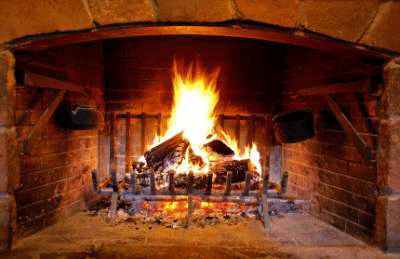All lighting used to be low energy
Proportionately, bright light in the evenings has only existed for the blink of an eye in our history

One doesn't even have to flick a switch turn on a light in 2012. Voice or motion activated control systems, remote dimming systems and light level monitors help us forget that creating artificial sunshine used to involve a great deal of effort.
Our forebears would not be able to comprehend the level of light we find essential today. On a dull day, most houses will burn their electric candles throughout the day, not just at night, and we even find the need to light our gardens, trees and buildings.
It is virtually impossible to imagine a world without instant light. We simply couldn't function as a modern society if we still needed to collect the wood to make a fire that we could see by! It was not until the arrival of the national grid in 1926 that relatively low cost, artificial sunlight became available. To put it in context, bright light has existed for a tiny flash in the history of our species. For centuries night was dark, with light provided by open fires, the moon and a few precious candles. People lived alongside nature and the cultural and emotional significance of moonlight was immense.

Most antique lighting that we restore today would have been owned by a small, very wealthy elite. Domestic lighting was a significant status symbol throughout the Georgian and Victorian eras and, even in the wealthiest of homes, was reserved for visitors who needed to be impressed. The humble tallow and rush light holders, and simple candles sticks used in the majority of homes were made cheaply by the local blacksmith and, as with most items without perceived value, were discarded or melted down when they were no longer required.
The magnificence of the Georgian chandelier is a beauty to behold, but a rare one even in Georgian times. We have long since left the era where the ability to light your home impressed your guests, although a crystal chandelier remains a symbol of extravagance; perhaps it is this symbolism which has encouraged the fashion to place them in less suitable locations, such as a kitchen!
Today we are entering an era where we are once again measuring the cost of lighting, but this time in terms of the environment rather than our ability to pay for it financially. New technologies are constantly improving, allowing us to have well and beautifully lit spaces whilst reducing the cost to the environment. Low- energy lighting has not always been aesthetically pleasing but, fortunately, this is now being addressed, meaning that elegant ceilings peppered with downlights are no longer the only suitable 'low energy' solution.

We each have our part to play in protecting our environment. As lighting designers and restorers, we try to do our bit; the antiques industry has, after all, been recycling for centuries. We always look for energy efficient solutions and we try to discourage unnecessary use of exterior light. So let's all take stock and remember that light remains a precious commodity and it comes at a cost.
Sign up for the Country Life Newsletter
Exquisite houses, the beauty of Nature, and how to get the most from your life, straight to your inbox.
This article was written by Projectbook member Karen Wallis-Smith, who owns Fritz Fryer Antique Lighting. Fritz Fryer offers an extensive lighting sales, design and consultancy service, specialising in the high quality restoration of period fittings. They also work with private and commercial clients to create sympathetic lighting solutions for period properties and their on-site workshop repair all fittings, by hand, to the highest possible standard.

This is an article from ProjectBook which provides a wide range of information for the conservation, restoration, care and repair of period and listed buildings. Fritz Fryer Antique Lighting is a member of the Heritage Register which contains over 500 vetted craftsmen, contractors and consultants from all over the UK. Updated daily with new content, the website features the heritage register, a products directory, informative articles, current news, events and more. For more information, visit www.projectbook.co.uk.
Country Life is unlike any other magazine: the only glossy weekly on the newsstand and the only magazine that has been guest-edited by HRH The King not once, but twice. It is a celebration of modern rural life and all its diverse joys and pleasures — that was first published in Queen Victoria's Diamond Jubilee year. Our eclectic mixture of witty and informative content — from the most up-to-date property news and commentary and a coveted glimpse inside some of the UK's best houses and gardens, to gardening, the arts and interior design, written by experts in their field — still cannot be found in print or online, anywhere else.
-
 Radbourne Hall, Derbyshire: The Palladian masterpiece reborn as a 21st century family home
Radbourne Hall, Derbyshire: The Palladian masterpiece reborn as a 21st century family homeJohn Goodall takes a look at the incredible resurrection of Radbourne Hall.
By John Goodall Published
-
 Urban beekeeping — from the illegal rooftop hives in New York City to Chelsea Flower Show
Urban beekeeping — from the illegal rooftop hives in New York City to Chelsea Flower ShowThe Tuesday of Chelsea (May 20) is World Bee Day; to celebrate The London Honey Company is sponsoring the Show's Bees of Development Balcony Garden.
By Rosie Paterson Published
